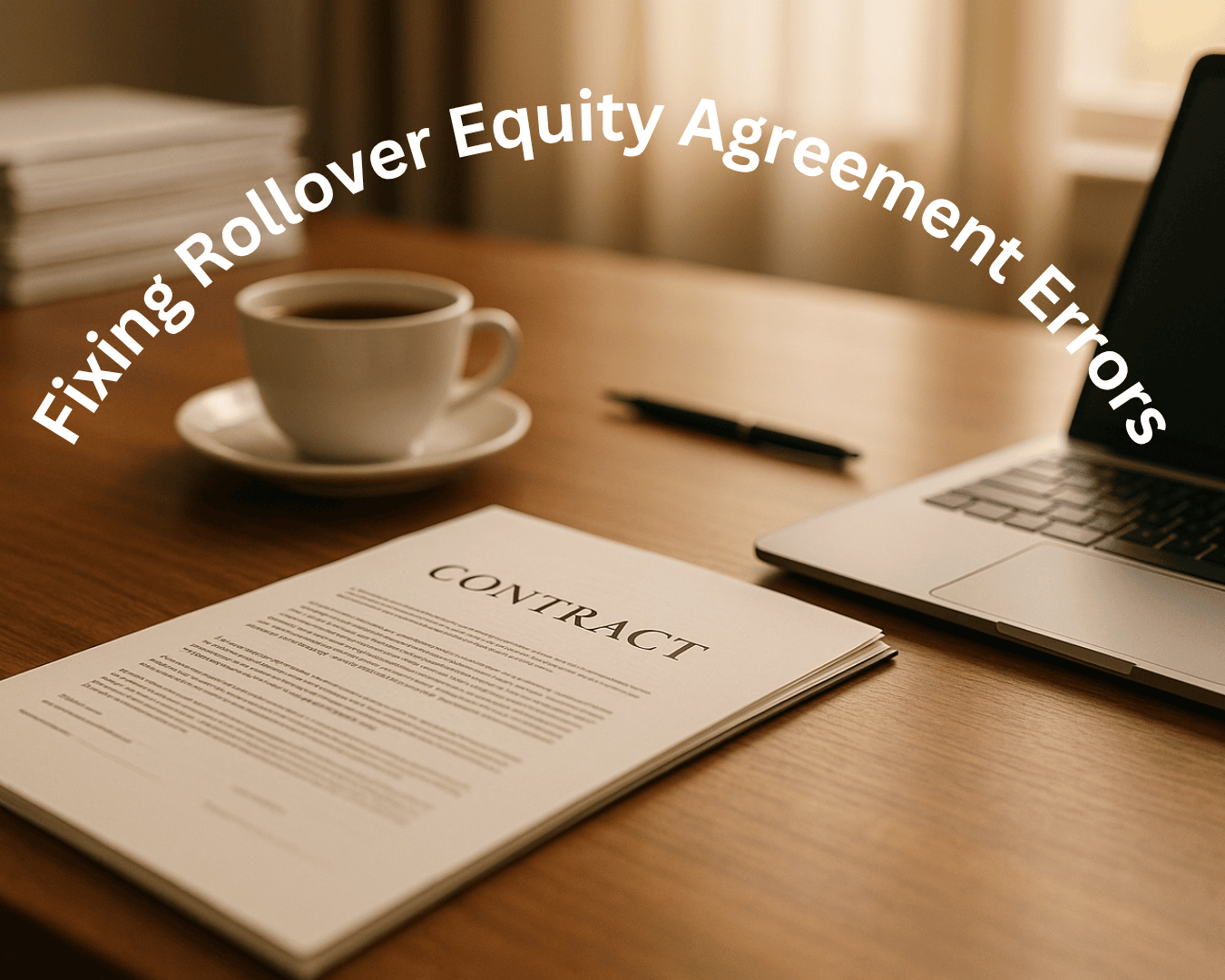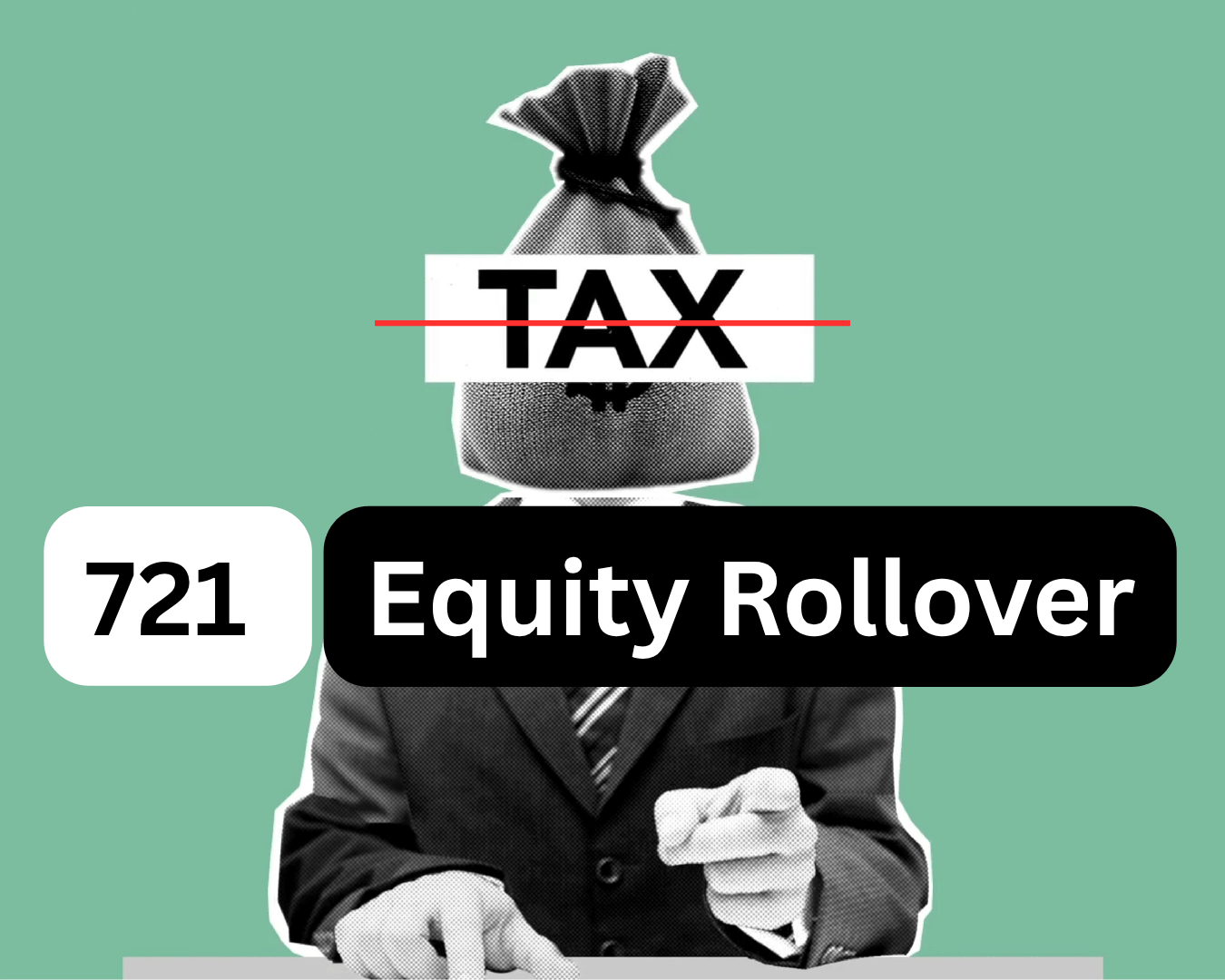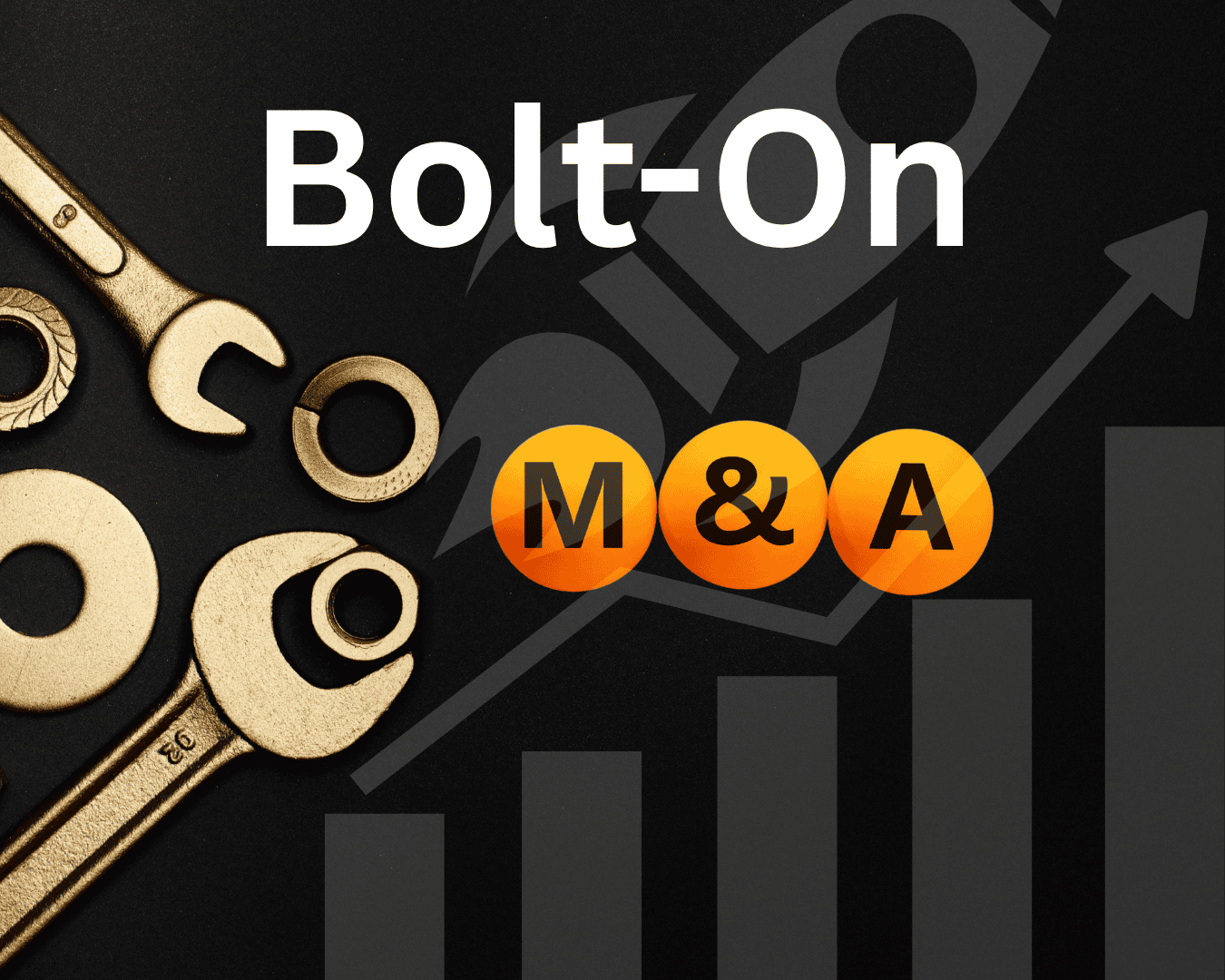Rollover equity agreements let sellers exchange part of their cash proceeds for equity in the acquiring company during mergers and acquisitions (M&A). While these deals can offer future financial growth and tax advantages, poorly structured agreements often lead to issues like illiquid investments, limited governance rights, unexpected tax burdens, or weak exit options.
Key mistakes include:
- Tying equity to employment, limiting flexibility.
- Accepting inflated stock valuations without independent verification.
- Lacking governance rights or access to company data.
- Weak liquidity provisions, leaving sellers unable to cash out.
- Overlooking tax implications, such as losing QSBS benefits.
To fix these problems:
- Separate equity ownership from employment terms.
- Conduct thorough stock valuation and due diligence.
- Negotiate governance rights and detailed reporting access.
- Add clear liquidity and exit options, like tag-along or put rights.
- Structure agreements to optimize tax benefits, preserving QSBS eligibility.
The solution lies in early involvement of legal, tax, and valuation experts to negotiate terms that protect your financial interests and ensure long-term benefits. Every clause is negotiable, so don’t settle for standard templates.
Rollover Equity, Dilution & Upside: Know Before You Close | Private Equity Pt. 2 Masterclass Moment
Common Errors in Rollover Equity Agreements
Rollover equity agreements are becoming a staple in M&A transactions, but they often come with pitfalls that can undermine a seller's financial goals. Poor planning, rushed negotiations, or inadequate advice can lead to structural flaws that impact long-term value. Below are some of the most common mistakes to watch for when crafting these agreements.
Linking Equity to Employment or Service Obligations
One frequent issue arises when rollover equity agreements tie ownership to continued employment or service. These agreements often require sellers to stay with the company for a set period - usually two to five years. If a seller leaves early, vesting schedules might reduce the equity they retain, and clawback provisions could allow the buyer to repurchase shares under specific conditions.
This arrangement limits career flexibility. By tying equity so closely to ongoing service, the financial benefits sellers expect from their rollover equity can be significantly diminished.
Inadequate Stock Valuation Due Diligence
Another common misstep is failing to thoroughly evaluate the buyer’s stock valuation. Sellers often focus on the cash component of the deal and overlook the equity portion, which can be based on inflated valuations. Optimistic projections or selective market comparisons might make the stock appear more valuable than it truly is.
Without independent verification, sellers risk holding equity that could lose value due to market shifts or underperformance.
Lack of Governance Rights and Data Access
Sellers frequently find themselves in a passive role due to poor governance terms. Many rollover equity agreements fail to grant sellers sufficient rights to participate in decision-making or access detailed operational data. Instead, sellers may only receive basic financial statements, leaving them with limited insight into the company’s performance.
Without board representation or observer rights, sellers have little say in strategic decisions that could affect their investment. Limited voting rights and drag-along clauses can further restrict their ability to influence exit strategies.
Weak Liquidity and Exit Options
Liquidity - or the ability to convert equity to cash - is a critical concern. Many agreements lack clear provisions for liquidity or defined timelines for exits, leaving sellers in a bind when they want to cash out.
Without tag-along or put rights, sellers may face indefinite holding periods. This lack of clarity can lead to disputes or delays when trying to realize the value of their equity.
Tax Issues and QSBS Qualification Challenges
Tax-related errors can also create significant problems. For instance, sellers may miss out on favorable tax treatment under Qualified Small Business Stock (QSBS) rules if the rollover structure resets the required holding period or fails to meet other criteria. QSBS benefits can provide substantial tax savings, so losing eligibility can result in unexpected liabilities.
Other tax complications might include immediate tax recognition instead of deferral, or challenges stemming from complex corporate structures. Some agreements also include tax gross-up provisions that can lead to additional financial burdens. Addressing these matters during negotiations is essential to avoid surprises and optimize tax outcomes.
How to Fix Rollover Equity Agreement Errors
Addressing errors in rollover equity agreements requires careful planning and expert guidance. Here's how to tackle common issues and ensure your agreement is structured effectively.
Separate Equity Ownership from Employment Requirements
One common mistake is tying equity ownership to employment terms. To fix this, ensure that your rollover equity is independent of your employment status. Avoid agreements that impose vesting schedules penalizing you for leaving the company early.
If the buyer insists on connecting equity to employment, negotiate limited repurchase rights. For instance, you could agree that the company may only repurchase your shares if you join a direct competitor within a specific timeframe, such as 12 months after leaving. Be cautious of overly broad non-compete clauses that might force you to forfeit shares for unrelated career moves.
If repurchase rights are unavoidable, make sure the terms are fair. The repurchase price should reflect the current fair market value, determined through independent appraisals. Additionally, set a reasonable timeline - typically 30 to 60 days - for completing the process.
Perform Complete Stock Valuation and Due Diligence
If stock valuation and due diligence are lacking, take steps to verify the stock's value independently. This is especially critical when dealing with private companies or non-publicly traded stock. A qualified appraiser can analyze financial statements, market conditions, and comparable transactions to provide an objective valuation.
Request detailed financial data and compare the buyer's performance metrics to industry standards. Look at factors like revenue multiples, EBITDA ratios, and growth rates to evaluate whether the valuation is realistic.
Pay close attention to recent financing rounds or third-party valuations. For example, if the company raised capital six months ago at a $50 million valuation but your rollover equity is based on a $100 million valuation, ask for a clear explanation of the change. Look for evidence such as new contracts, market shifts, or operational improvements to justify the increase.
Negotiate Governance Rights and Information Access
If governance rights and access to company information are missing, take steps to secure them. Negotiate for a board seat or at least observer rights, which allow you to attend meetings and access board materials.
Demand regular and detailed reporting beyond basic financial statements. Monthly management reports, quarterly business reviews, and annual budgets are essential. You might also include provisions for special reports if the company encounters major challenges or opportunities.
Establish consent rights for significant decisions that could impact your investment. For example, you may want approval rights for large expenditures, acquisitions, strategic changes, or additional debt financing. While you don't need to micromanage, having a say in critical decisions ensures your interests are protected.
Create Clear Liquidity and Exit Provisions
Weak liquidity and exit options can leave you stuck with illiquid shares. To avoid this, include tag-along rights in your agreement. These rights ensure you can sell your shares on the same terms as other shareholders if they decide to sell their stakes.
Negotiate for put rights, which allow you to sell your shares back to the company or require other shareholders to buy you out after a set period, typically three to five years. This provides a clear exit path if no other liquidity events occur.
Set clear exit triggers and timeframes, usually within five to seven years. Include provisions requiring the board to explore exit opportunities once specific milestones - such as revenue or profitability targets - are achieved.
Structure Tax Benefits for Long-Term Gains
Tax considerations, including Qualified Small Business Stock (QSBS) treatment, are crucial when rolling over equity. If your stock qualifies for QSBS benefits, structure the transaction to preserve these advantages. Under Section 1202, a tax-deferred exchange allows you to maintain your original holding period, potentially enabling up to $10 million in tax-free gains.
Work with tax advisors to ensure the acquiring company meets QSBS requirements. For instance, the company must be a C-corporation with gross assets under $50 million, using at least 80% of its assets in an active business. Be cautious of holding company structures or passive investments that might disqualify QSBS treatment.
Consider installment sale treatment if you're receiving cash upfront along with rollover equity. This approach can spread your tax liability over several years, reducing the overall burden. Additionally, structure earnout payments or contingent considerations to qualify for capital gains treatment instead of higher ordinary income tax rates.
To secure long-term capital gains benefits, maintain a holding period of over 12 months. Avoid resets that shorten your holding period, and structure the deal to preserve your original acquisition date whenever possible. This ensures you retain favorable tax rates on future sales.
sbb-itb-a3ef7c1
How to Prevent Rollover Equity Errors
To protect your rollover equity investment over the long term, it's crucial to focus on prevention. By involving advisors early, carefully reviewing documents, and negotiating clear terms, you can avoid costly mistakes and ensure your interests are safeguarded.
Hire Legal and Financial Advisors Early
Bringing in the right advisors early can make all the difference when navigating the complexities of rollover equity. Your team should include:
- An M&A attorney: They can structure the legal framework and negotiate provisions that protect your interests.
- A tax advisor: They ensure the rollover structure aligns with your tax goals, including preserving QSBS (Qualified Small Business Stock) benefits.
- A valuation expert: They provide an objective assessment of the acquiring company's value.
Clearly define your goals with your advisors from the outset. Whether you aim to maximize liquidity, maintain influence, or optimize your tax position, having a clear focus will guide negotiations. Advisors can also help you plan for future scenarios, such as capital raises or follow-up acquisitions, minimizing surprises down the road.
Review All Transaction Documents Carefully
Thoroughly reviewing transaction documents is another key step. Rollover equity agreements often involve multiple interconnected documents, and inconsistencies can lead to major problems later.
Start by reviewing both the purchase agreement and the rollover equity agreement. Then, examine related documents like the acquiring company’s articles of incorporation, shareholder agreements, and board resolutions. Pay close attention to how these documents interact and check for any conflicting provisions.
Look for ambiguous terms. For example, phrases like "material adverse change" or "reasonable efforts" should be clearly defined. If the agreement mentions "substantially similar" rights to other shareholders, clarify what that means in practice.
Verify that ownership percentages, valuation figures, and payout calculations are consistent across all documents. Double-check key terms, such as voting rights, information access, transfer restrictions, and exit provisions, to ensure everything aligns.
Negotiate Clear Terms and Protections
Once the documents are accurate, focus on securing specific protections through negotiation. Don’t rely on standard templates - they rarely address your unique needs. Every term in a rollover equity agreement is negotiable, so take the time to secure safeguards for your investment.
Key areas to negotiate include:
- Anti-dilution clauses: Protect your ownership percentage if new shares are issued at lower valuations.
- Veto rights: Secure the ability to block significant decisions, such as large expenditures, strategic changes, or additional debt.
- Enhanced information rights: Go beyond basic financial statements and request detailed management reports, business updates, and advance notice of board meetings.
- Buyback provisions: Ensure these reflect fair market value and include clear timelines.
Benchmark your negotiated terms against market standards with the help of your advisors. Tax optimization should also be part of your strategy. For example, structuring earnout payments or contingent considerations to qualify for capital gains treatment can provide long-term financial advantages while preserving your QSBS holding period.
Finally, document everything. Record all negotiated terms, including any verbal agreements or side deals, to prevent misunderstandings later. A clear record ensures everyone is on the same page and protects you from disputes down the line.
Conclusion: Protect Your Investment with Better Agreements
Rollover equity can be a great way to build wealth - when it's structured properly. But the devil is in the details, and without expert guidance, those details can be easy to miss.
Take the story of a Denver founder who almost lost his $7 million rollover. Why? He tied his equity to a short-term consulting role. It was only through legal review and negotiation that his investment was saved. On the flip side, another investor saw a $4.5 million rollover grow to $14.4 million in just four years. These examples show how the right - or wrong - approach can make or break your financial future.
Common mistakes can quickly drain the value of your investment. Tying equity to employment, using poor valuation methods, or leaving liquidity provisions too weak can all leave you stuck in bad positions. And don't overlook tax structures - errors here could mean unexpected liabilities eating into your returns. These aren't just "what-ifs"; they’re real problems that have cost investors millions.
The best strategy? Be proactive. Early involvement with legal and financial experts is crucial. They can spot potential issues, negotiate better terms, and ensure your agreements protect your rights, tax benefits, and exit options. Every clause in a rollover equity agreement is negotiable. Relying on standard templates or verbal promises can leave you exposed. Taking the time to carefully review documents and negotiate strategically can pay off significantly when your equity grows - or when it's time to sell.
For added support, platforms like Clearly Acquired combine AI-driven tools with expert advisory services to make navigating these agreements easier. Their streamlined approach helps you avoid common mistakes while simplifying the entire transaction process.
Your rollover equity represents your share in the business's future success. By getting the details right now, you can turn it into a lasting asset instead of a costly mistake.
FAQs
What steps should I follow to structure a rollover equity agreement and avoid common mistakes?
To create a well-structured rollover equity agreement and sidestep potential pitfalls, start by laying out the key terms in detail. This includes specifying voting rights, how profits and losses will be divided, and the rules for governance. By doing this upfront, you can reduce the chance of disagreements later.
It's also crucial to perform thorough due diligence on any existing shareholder agreements. At the same time, take the time to fully understand the tax consequences tied to the rollover. Careful planning here can save you from unexpected financial or legal surprises. Finally, make sure all terms are clearly outlined in a legally binding written agreement. This step helps safeguard everyone involved and ensures the transaction goes smoothly.
How can sellers make sure the stock valuation in a rollover equity agreement is accurate and fair?
To make sure the stock valuation in a rollover equity agreement is accurate and reasonable, sellers need to take a close look at the buyer's financial details and the methods used for valuation. It’s crucial to check that the valuation follows established standards, like fair market value or discounted cash flow analysis.
Bringing in an independent valuation expert can offer an impartial perspective and help spot any inconsistencies. On top of that, performing detailed due diligence and keeping open lines of communication with the buyer can help prevent problems and ensure the agreement terms work fairly for everyone involved.
What are the tax implications of rollover equity agreements, and how can sellers structure them to maintain tax benefits like QSBS eligibility?
Rollover equity agreements can provide notable tax advantages, especially when they allow for the deferral of capital gains taxes under provisions like Sections 1045 or 351 of the Internal Revenue Code. Additionally, sellers may retain benefits such as Qualified Small Business Stock (QSBS) eligibility if they meet specific requirements, including holding the stock for the necessary period and ensuring the stock type qualifies.
To make the most of these advantages, sellers should steer clear of actions that might jeopardize QSBS status. For example, issuing stock that doesn’t meet qualifying criteria or engaging in large redemptions could disqualify them. Collaborating with seasoned tax professionals is key to structuring agreements that maximize tax deferral opportunities while preserving eligibility for essential tax benefits.





















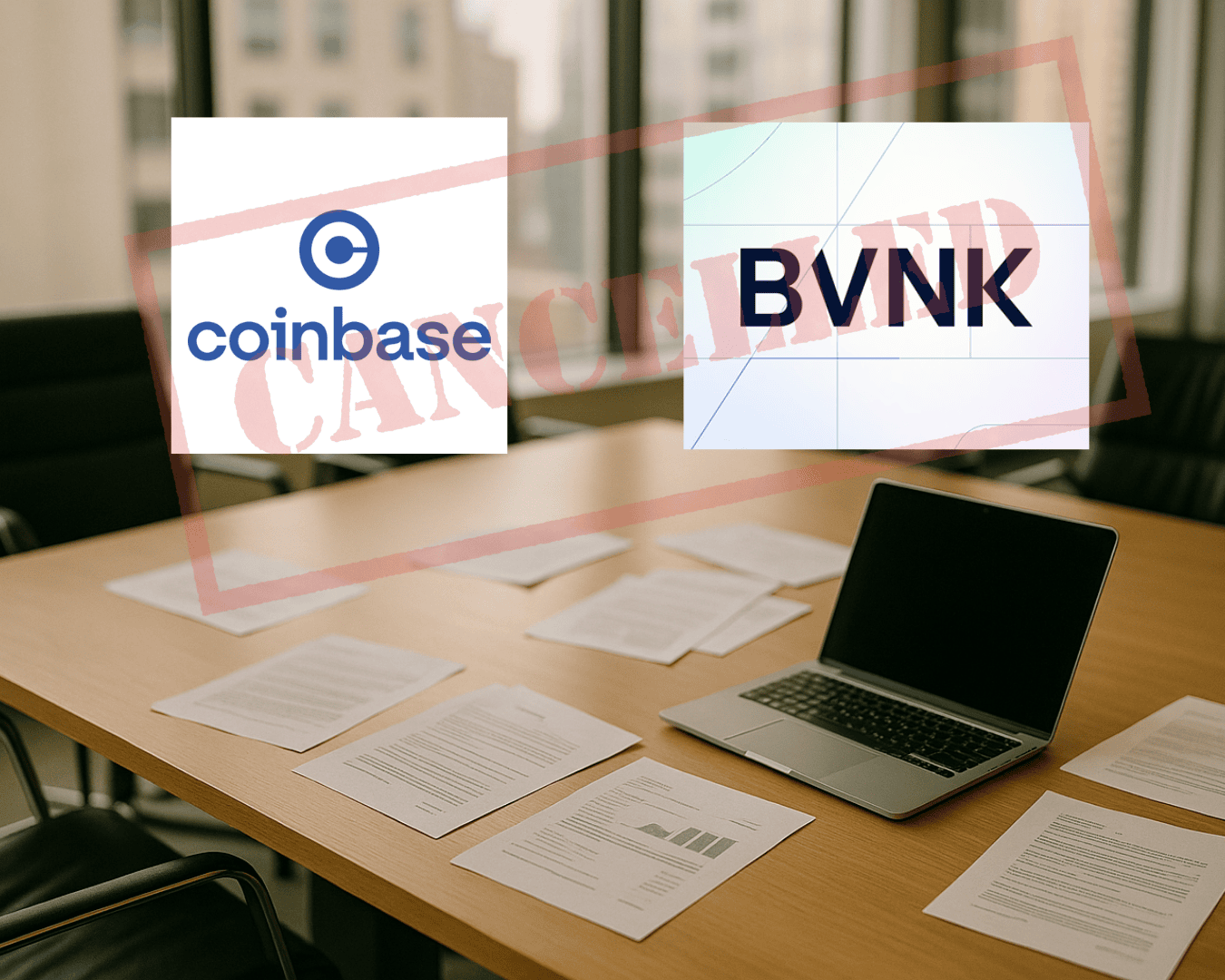









.png)




























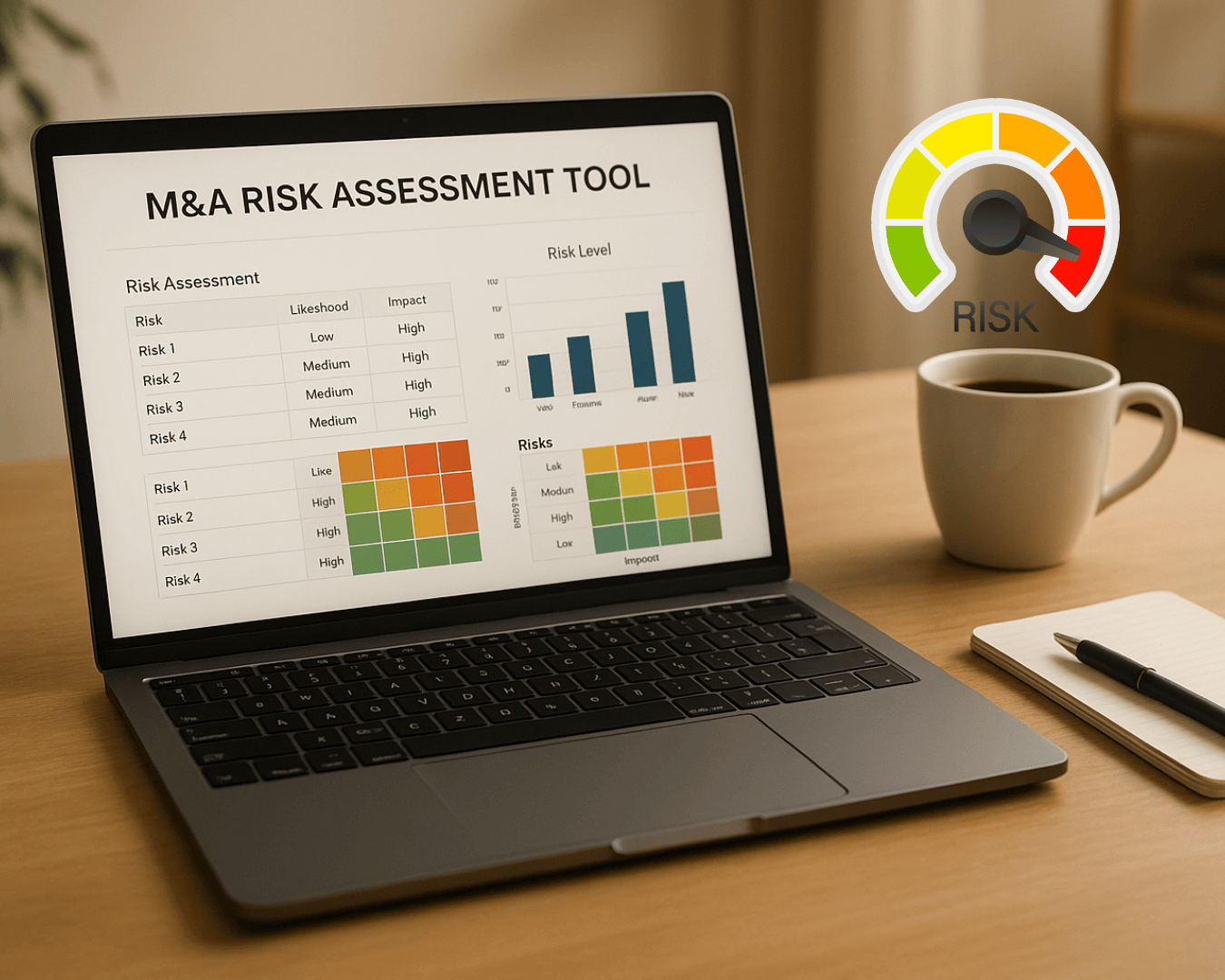











%20Loan%20Application%20Checklist.png)
